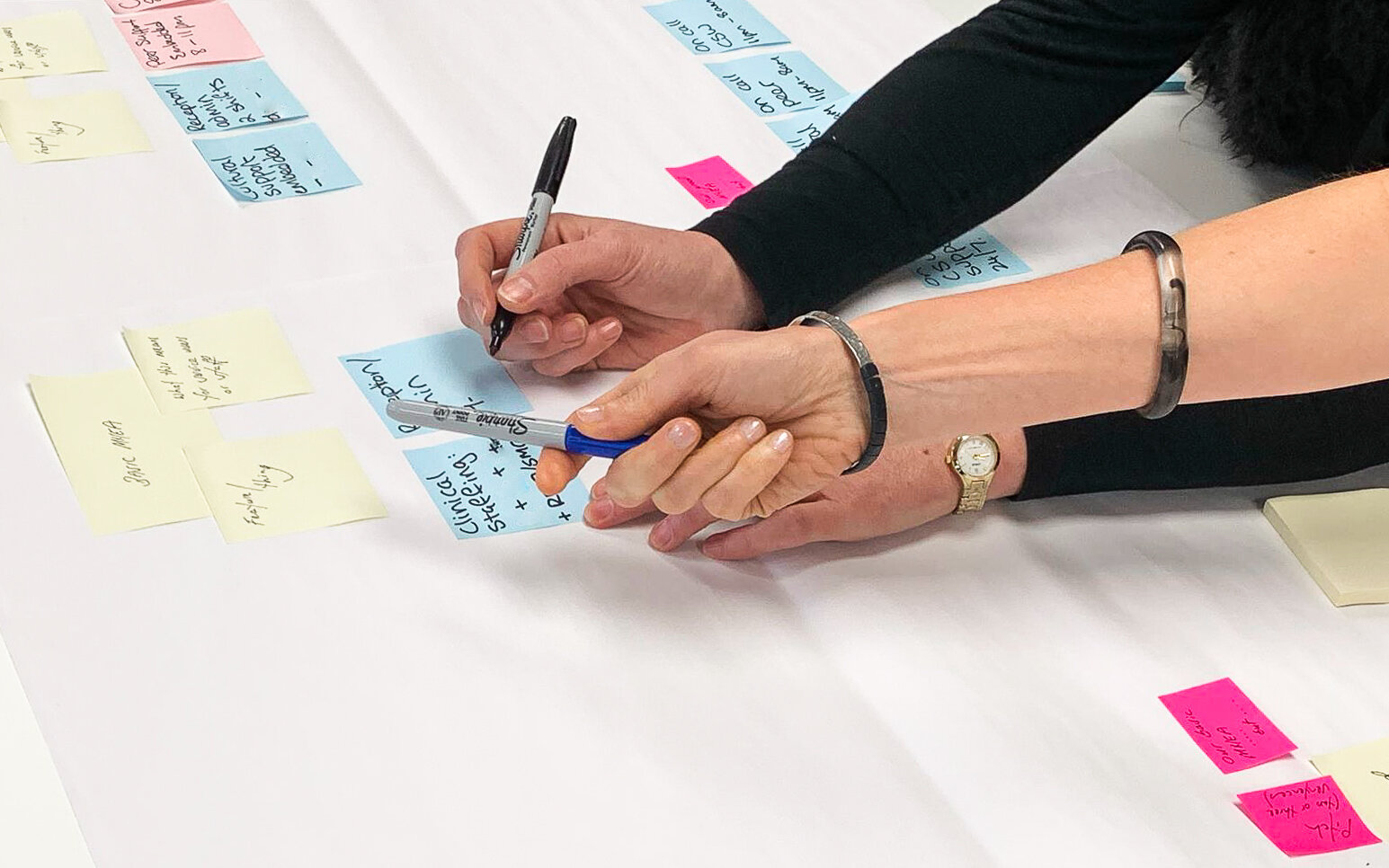Using Design Sprints to Create a Mental Health Emergency Alternative
In July we worked with mental health clinicians and support workers to uncover how a mental health emergency alternative (MHEA) might look and work.
Background
During the response to COVID-19 a MHEA was set up at Greenlane to divert those with mental health needs away from the emergency department at Auckland City Hospital.
This was designed to reduce the risk of exposure to COVID-19 for patients and staff, as well as minimise the chance of contamination between sites. Additionally, it allowed the emergency department to focus on individuals with physical needs, and to prepare for the potential influx of patients with COVID-19.
The temporary MHEA was a success, so much so that Auckland DHB wanted to explore how we might improve upon the initial design of this service.
What we did
Our aim was to document MHEA’s service delivery process, and the requirements for a physical space (eg. furniture, clinics, art and whānau rooms). We brought stakeholders together to clearly define goals, validate assumptions and decide on the shape of the service before starting development.
To achieve this we used the Double Diamond design thinking model, a four staged process:
Discover: understand what the problem is by spending time with those affected by the issues.
Define: use the insights gathered in the discovery phase to define the challenge in different ways.
Develop: take inspiration from elsewhere to generate multiple solutions to the problem.
Deliver: test solutions on a small scale, rejecting those that don’t work and improving those that do.
The double diamond process. The Double Diamond approach was implemented over two design sprints, over the course of 6 days.
Sprint One: MHEA Service Delivery Process
In the first sprint we focused on designing the MHEA service delivery, and created an action plan for implementation. Some of the exercises we ran were:
Assumption mapping: uncovering what people knew (facts), and what they needed to validate (assumptions).
Process mapping the current experience: understanding how people were using the temporary MHEA, including example patients.
Ingredients of care: making sure stakeholders knew what MHEA should look, sound and feel like.
New process mapping: understanding how we can address patients’ health concerns and improve their experience. These were used to design the new service delivery process.
Service provocations: using examples of services from different industries to think about how MHEA could deliver its service differently.
Failure Modes Effects Analysis: identifying potential issues and risks, to assess their impact and identify areas for improvement.
Process roles and responsibilities: identifying the stakeholders needed to design and deliver MHEA successfully, and what their roles are, using the RASCI model.
Participants completing the process mapping activity
Sprint Two: Spatial Requirements
This sprint aimed to understand the spatial needs for the service. Before we started, we decided to form design principles for the service and space, using the ingredients of care generated in the first sprint. We thought this was important for ensuring that the spatial and service designs meet the service’s values for delivering care, while also creating a safe and satisfying work environment.
Some of the activities we did to understand the spatial needs were:
Functional brief: understanding, in detail, the physical requirements of the new space, for example furniture, technology and stationery, and catalysing the process of securing a location.
Mudmaps: identifying the layout of the space, and how clinicians, patients and whānau would operate and interact within the space. Patient scenarios were used, tracking how a real patient might experience the designs.
Pinterest imagery: printed imagery of different interior designs were sorted based on which would be most desirable for MHEA. Participants placed these images on their mudmaps to depict which designs would be best suited for the different spaces within MHEA.
Participants sharing their ideas during the open home
At the end of both sprints the groups pitched their ideas for MHEA to the wider group, with senior leaders attending an open home.
The results of the sprints were well received by the sprint participants, who were highly engaged throughout. Making time and space for clinicians and support staff to design their own ideal service and space was empowering. It enabled them to express their desires for a welcome process, patient and staff safety, and a space for staff to decompress. It was eye-opening for us all. We look forward to the next step, which is finding the ideal spot!
THANKS TO
Thank you to everyone who took part in the design sprints, as well as the sponsors of this work.
Hineroa Hakiaha – Co-Director Mental Health; Tracy Silva Garay – Co-Director Mental Health; and Alison Hudgell – General Manager, Mental Health.
CONTRIBUTORS
Natalie Parke – Spatial Designer, Ara Manawa
Justin Kennedy-Good – Director, Ara Manawa
Abbi Harwood-Tobin – Programme Director, Performance Improvement
AUTHOR
Sarvnaz Taherian – Experience Designer, Ara Manawa



